How to Fertilize Cucumbers Effectively: Secrets to a Bountiful Harvest
- February 28, 2024
- 0 comment
Learn how to fertilize cucumbers right to get more cucumbers and bigger harvests. Growing cucumbers can be fun but also tricky. The key to a good harvest is knowing how to fertilize them properly. This guide keeps things simple, showing you what your cucumber plants need to grow well. We’ll talk about the right kind of fertilizer and the best times to use it. Follow these tips to make your cucumber plants healthy and get a lot of cucumbers.
Table of Contents
- Understanding Cucumber Nutritional Needs
- Soil Preparation and Testing
- Selecting the Right Fertilizer
- Fertilization Schedule and Techniques
- Step-by-Step Guides on How to Fertilize Cucumber
- Monitoring and Adjusting Fertilization Practices
- Watering Practices in Relation to Fertilization
- Optimal Planting Distances for Cucumbers
- Seasonal Pest Management in Cucumber Cultivation
- Common Mistakes to Avoid
- Conclusion
- FAQs
Understanding Cucumber Nutritional Needs
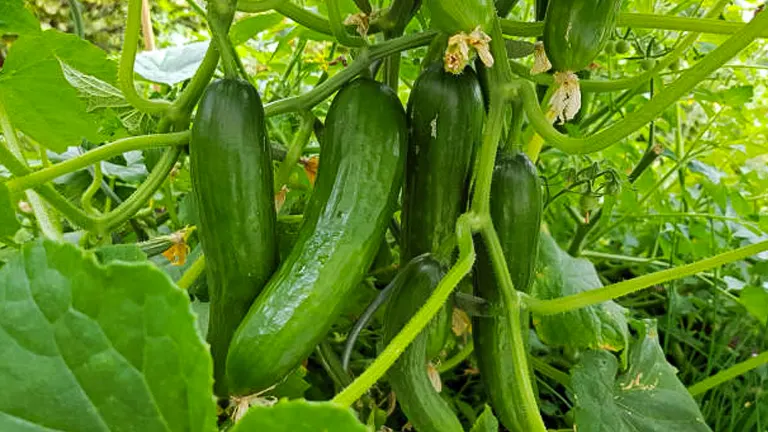
Cucumbers, a staple in vegetable gardens, thrive when provided with a precise balance of macro and micronutrients throughout their growth cycle. The developmental stage of the plant dictates the nutrient demands, influencing everything from root formation to fruit production. Below, we break down these requirements and introduce a table summarizing the key nutrients, their roles, and ideal concentrations for optimal growth.
Macro and Micronutrient Roles in Cucumbers
- Nitrogen (N): Essential for vegetative growth, nitrogen promotes the development of healthy, green foliage. It is a critical component of chlorophyll, amino acids, and proteins.
- Phosphorus (P): Vital for root development, energy transfer, and flowering, phosphorus supports the early stages of growth and helps plants withstand environmental stress.
- Potassium (K): Increases disease resistance, aids in water use efficiency, and is crucial for the synthesis and transport of sugars and starches, impacting fruit quality.
Micronutrients, though required in smaller quantities, are equally important:
- Calcium (Ca): Necessary for cell wall structure and integrity, calcium prevents blossom end rot, a common disorder in cucumbers.
- Magnesium (Mg): A central component of chlorophyll, magnesium is essential for photosynthesis and enzyme activation.
- Sulfur (S): Integral for protein synthesis, sulfur also plays a role in metabolic functions and resistance to disease.
- Trace Elements: Boron (B), manganese (Mn), and zinc (Zn) are crucial for developmental and physiological processes, including cell wall formation, photosynthesis, and nitrogen metabolism.
Comprehensive Nutrient Requirements for Cucumbers
| Nutrient | Role in Plant Growth | Seedling Stage (ppm) | Vegetative Stage (ppm) | Flowering & Fruiting Stage (ppm) | Scientific Insights |
|---|---|---|---|---|---|
| N (Nitrogen) | Promotes leaf and stem growth. | 50-80 | 80-120 | 100-150 | Essential for chlorophyll production, amino acids, and proteins, directly influencing photosynthesis and growth rate. |
| P (Phosphorus) | Supports root development, flower, and fruit formation. | 30-50 | 30-60 | 40-70 | Plays a critical role in energy transfer within the plant, aiding in the synthesis and breakdown of carbohydrates. |
| K (Potassium) | Enhances fruit quality, water uptake, and disease resistance. | 60-100 | 100-150 | 120-200 | Regulates stomatal opening, affecting transpiration and CO2 uptake for photosynthesis; vital for activating enzymes involved in growth and development. |
| Ca (Calcium) | Crucial for cell wall strength and membrane function. | 40-60 | 60-100 | 80-120 | Prevents blossom end rot by stabilizing cell integrity, facilitating normal development of the fruit. |
| Mg (Magnesium) | Central to chlorophyll molecule, facilitates photosynthesis. | 20-40 | 30-50 | 40-60 | Acts as a cofactor for many enzymes, playing a significant role in the plant’s metabolic processes, including DNA synthesis and repair. |
| S (Sulfur) | Integral for protein synthesis and enzyme function. | 10-20 | 15-30 | 20-40 | Contributes to flavor and nutritional quality of the fruit by synthesizing essential amino acids and vitamins. |
| B (Boron) | Affects cell wall formation and stability, nutrient transport. | 0.5-1.0 | 0.5-1.5 | 0.5-2.0 | Critical for the movement of sugars across cell membranes and development of reproductive structures. |
| Mn (Manganese) | Involved in chlorophyll production and nitrogen conversion. | 0.5-1.0 | 0.5-1.5 | 0.5-2.0 | Acts as a cofactor for enzymes in photosynthesis and respiratory processes, enhancing energy transfer. |
| Zn (Zinc) | Vital for stem growth, leaf formation, and fruit development. | 0.5-1.0 | 0.5-1.5 | 0.5-2.0 | Essential for protein synthesis, growth hormone production and regulation, and pollen formation. |
Additional Notes
- Parts per Million (ppm): Indicates the precise nutrient levels in the soil, crucial for balanced fertilization.
- Nutrient Balance: Excess of one nutrient can inhibit the uptake of others. Balance is key.
- Soil Type: Nutrient availability varies by soil type. Sandy soils leach nutrients faster than clay soils.
- Organic Matter: Enhances nutrient availability, water retention, and soil structure.
- pH Sensitivity: Nutrient uptake is affected by soil pH. Aim for a pH of 6.0 to 7.0 for optimal nutrient availability.
- Foliar Feeding: Effective for quick nutrient uptake, especially for micronutrients.
- Seasonal Adjustments: Nutrient needs may change with the season and plant growth stage.
- Environmental Considerations: Prefer slow-release and organic fertilizers to reduce environmental impact.
Soil Preparation and Testing
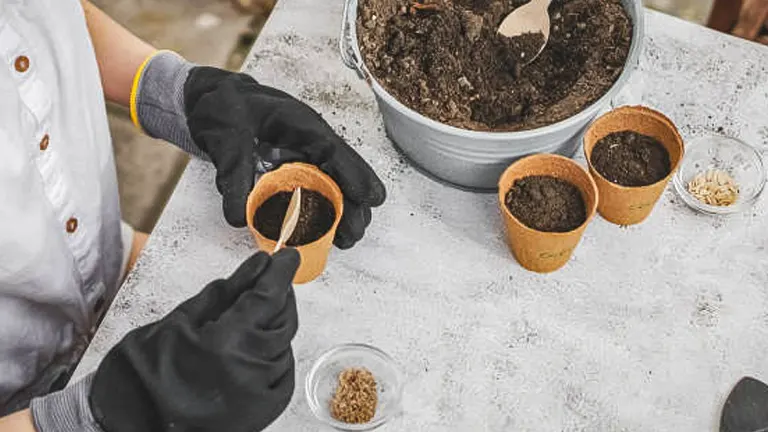
Soil preparation goes beyond basic tilling; it involves creating an environment where cucumbers can thrive. This includes adjusting physical properties, chemical composition, and biological activity to suit the specific needs of cucumber plants.
Importance of Soil Structure and Microorganisms
- Soil Structure: Well-aerated, loose soil allows for better root penetration and water drainage, critical for healthy cucumber growth. Incorporating organic matter such as compost or aged manure improves soil structure and aeration, facilitating root development and nutrient uptake.
- Soil Microorganisms: Beneficial bacteria and fungi play a vital role in nutrient cycling, breaking down organic matter into forms that plants can easily absorb. They also contribute to disease suppression and improved plant resilience.
Soil Parameters for Optimal Cucumber Growth
| Soil Parameter | Ideal Range | Notes |
|---|---|---|
| pH Level | 6.0 – 7.0 | Slightly acidic to neutral; adjust with lime or sulfur as needed. |
| Organic Matter | 5% – 10% | Essential for nutrient availability and soil structure. |
| Nitrogen (N) | Moderate | Too high levels can inhibit fruiting. |
| Phosphorus (P) | High | Essential for root development and flowering. |
| Potassium (K) | High | Crucial for water regulation and fruit quality. |
| Calcium (Ca) | Adequate | Prevents blossom end rot. |
| Magnesium (Mg) | Adequate | Important for chlorophyll production. |
| Soil Texture | Loamy | Ensures good drainage and aeration. |
Analysis
- pH Influence on Nutrient Availability: Soil pH affects the solubility of minerals and availability of nutrients. For instance, iron becomes less available in alkaline conditions, potentially leading to deficiencies.
- Organic Matter and CEC: Organic matter increases the soil’s cation exchange capacity (CEC), enhancing its ability to hold onto essential nutrients and release them to plants.
- Microbial Activity and Temperature: Soil temperature affects microbial activity, which in turn influences nutrient cycling. Optimal microbial activity occurs between 15°C and 30°C (59°F to 86°F), highlighting the importance of early soil preparation.
Advanced Soil Preparation Tips
- Cover Crops: Growing cover crops during the off-season can improve soil structure, add organic matter, and fix atmospheric nitrogen.
- Mulching: Applying mulch conserves moisture, suppresses weeds, and adds organic matter as it decomposes.
- Soil Amendments: Based on soil test results, incorporate specific amendments. For example, greensand is a good source of potassium and trace minerals, while bone meal provides phosphorus.
Selecting the Right Fertilizer
Selecting the appropriate fertilizer for cucumbers involves understanding the nuances of plant nutrition and the interaction between fertilizers and soil health. The goal is to provide cucumbers with the nutrients they need for each growth stage while also considering the long-term health of the garden ecosystem.
Types of Fertilizers and Their Impact
1. Organic Fertilizers
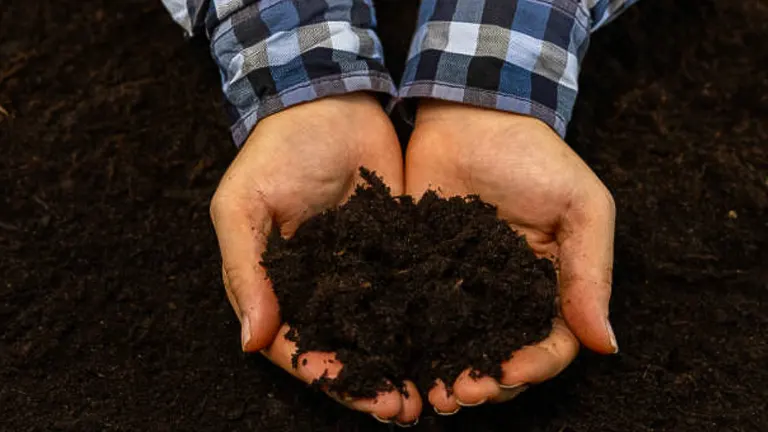
Derived from natural sources such as compost, manure, bone meal, and seaweed, organic fertilizers offer a slow-release of nutrients, mimicking the natural soil nutrient cycle. They enrich the soil with organic matter, enhancing its structure and supporting a vibrant soil microbiome. These fertilizers gradually improve soil fertility and water retention, contributing to sustained plant health and resilience against pests and diseases.
- Compost: A balanced source of N-P-K that improves soil texture and microbial life.
- Manure: Rich in nitrogen, also adds organic matter but must be well-composted to avoid burning plants.
- Bone Meal: High in phosphorus, ideal for root development in the early stages of growth.
2. Synthetic Fertilizers
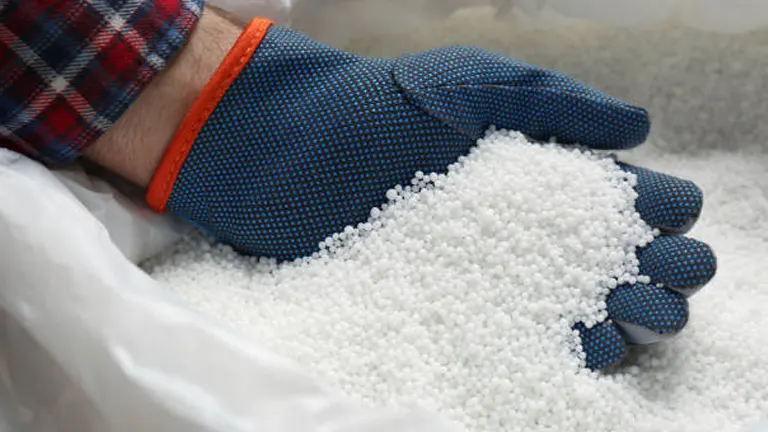
These fertilizers are chemically formulated to provide plants with readily available nutrients. While they can significantly boost plant growth and productivity in the short term, their long-term use can disrupt soil microbial ecosystems and lead to nutrient leaching, potentially harming environmental health.
- Balanced N-P-K Fertilizers: These are general-purpose fertilizers that support overall growth. The N-P-K ratio (e.g., 10-10-10) indicates the percentage of nitrogen, phosphorus, and potassium.
- Specialized Fertilizers: Formulations with higher phosphorus or potassium content cater to specific needs, such as root development or fruit production.
Selecting Fertilizer Based on Growth Stages
- Seedling Stage: Opt for a fertilizer higher in phosphorus to encourage strong root growth. Organic options like bone meal or a synthetic starter solution can be effective.
- Vegetative Growth: Nitrogen becomes critical. Organic compost or a balanced synthetic fertilizer will promote leaf and stem development.
- Flowering and Fruiting: Increase potassium to support fruit development and overall plant health. Potassium sulfate or an organic potassium-rich fertilizer is suitable.
Scientific Considerations and Soil Health
- Soil Test Analysis: Precise soil tests can reveal specific nutrient deficiencies or excesses, guiding the choice of fertilizer. For example, a soil lacking in magnesium might benefit from a fertilizer that also contains this micronutrient.
- Environmental Impact: The use of organic fertilizers contributes to soil carbon sequestration, mitigating climate change. Synthetic fertilizers, especially when overused, can contribute to nitrogen runoff, affecting water quality.
Fertilization Schedule and Techniques
Pre-Planting (Late Winter to Early Spring)
- Soil Testing: Conduct a comprehensive soil test to determine pH and nutrient levels, ideally 1-2 months before planting.
- Soil Amendment: Based on test results, incorporate organic matter and a balanced, slow-release fertilizer into the soil 2-4 weeks before planting. Aim for a balanced N-P-K ratio (e.g., 10-10-10) to prepare the soil.
Planting Time (Spring)
- Initial Fertilization: At planting time, ensure that the soil is well-amended as per pre-planting recommendations. If using transplants, you can apply a starter solution—a diluted, high-phosphorus liquid fertilizer—to encourage root growth.
Early Growth (Late Spring)
- Nitrogen Boost: Approximately 2-3 weeks after planting, when true leaves have developed, apply a side-dressing of nitrogen-rich fertilizer to support vigorous leaf and stem growth. Organic options include blood meal or fish emulsion, while synthetic options may involve a liquid fertilizer with a higher nitrogen content.
Vegetative Growth (Early to Mid-Summer)
- Continuous Monitoring: As the plant grows, monitor its health and soil moisture. Cucumbers will rapidly expand during this period, requiring consistent nutrition.
- Second Nitrogen Application: 4-6 weeks after the initial nitrogen boost, consider a second application to sustain growth, especially for vining varieties that have a longer growing period.
Flowering and Fruiting (Mid-Summer to Early Fall)
- Shift to Potassium and Phosphorus: As flowers appear and cucumbers begin to form, apply a potassium-rich fertilizer to enhance fruit development and improve disease resistance. A balanced formula with added potassium (e.g., 5-10-10) is ideal.
- Micronutrient Check: Ensure plants are receiving adequate calcium and magnesium, critical during fruit set and development. Foliar sprays can address immediate micronutrient needs.
Post-Harvest (Late Fall)
- Soil Health: After harvesting, consider adding compost or green manure to the soil to replenish nutrients and maintain soil health, preparing for the next planting season.
Additional Notes
- Climate Variability: The schedule may need adjustments based on local climate conditions. In warmer regions, planting and fertilization could start earlier; in cooler climates, later.
- Continuous Assessment: Regularly inspect plants for signs of nutrient deficiency or stress. Leaf color, growth rate, and fruit development can indicate whether adjustments to the fertilization schedule are necessary.
- Water Management: Cucumbers are water-intensive plants. Ensure consistent watering, especially after fertilizing, to facilitate nutrient uptake.
Step-by-Step Guides on How to Fertilize Cucumber
Step 1: Identify Nutritional Needs
- Early Growth: Prioritize phosphorus to support root development.
- Leaf Development: Increase nitrogen to promote healthy leaves.
- Fruit Production: Boost potassium for fruit quality and plant health.
Step 2: Soil Testing
- Perform a soil test to check pH and nutrient levels.
- Aim for a soil pH between 6.0 and 7.0, adjusting as needed with lime or sulfur.
Step 3: Soil Preparation
- Mix organic matter (e.g., compost, aged manure) into the soil to enhance fertility.
- Ensure soil is loose and well-drained for optimal root growth.
Step 4: Choose the Right Fertilizer
- Start with a balanced fertilizer (e.g., 10-10-10 NPK) at planting.
- Later, use fertilizers with higher phosphorus for planting and higher potassium for fruiting.
- Organic options like fish emulsion or compost tea are beneficial for soil health.
Step 5: Fertilizer Application
- Before Planting: Incorporate fertilizer into the soil as per instructions to avoid root damage.
- After Seedling Establishment: Use a diluted liquid fertilizer to encourage growth without overwhelming the plants.
- During Leaf Growth: Apply a nitrogen-focused fertilizer to support leaf development.
- For Flowering and Fruiting: Use a fertilizer low in nitrogen but high in potassium, applying it carefully around the plants.
Step 6: Monitor and Adjust
- Watch for signs of nutritional excess or deficiency in plant appearance.
- Adjust your fertilization strategy based on plant growth and updated soil tests.
Step 7: Watering
- Water plants thoroughly when applying solid fertilizers to help nutrients dissolve.
- Keep soil consistently moist, especially during key growth phases, to facilitate nutrient uptake.
Step 8: Crop Rotation
- Rotate cucumber crops annually to prevent soil nutrient depletion and disease buildup.
Avoiding Common Mistakes
- Avoid over-fertilizing to prevent poor fruiting and potential disease.
- Pay attention to soil pH since it affects nutrient availability.
- Ensure proper watering, as incorrect amounts can hinder nutrient absorption.
Monitoring and Adjusting Fertilization Practices
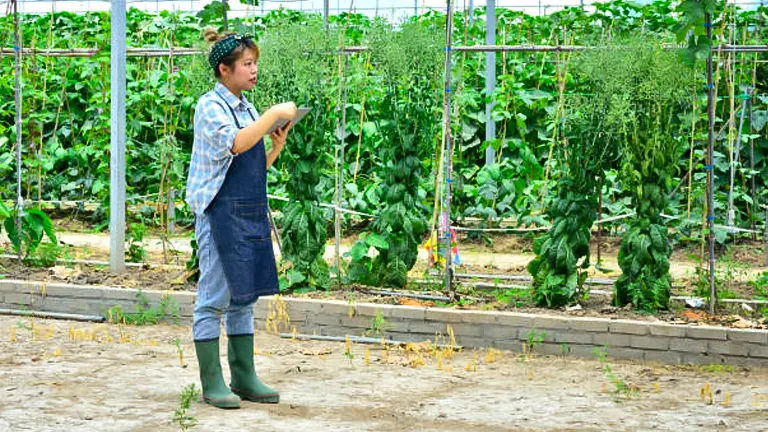
Effective fertilization management is an ongoing process that requires keen observation, understanding of plant signals, and a willingness to adapt practices based on plant needs and environmental conditions. Here’s how to refine your approach for the healthiest cucumber plants:
Key Indicators of Nutrient Status
- Nitrogen (N) Deficiency: Look for older leaves turning yellow or pale green. Nitrogen is mobile in plants, so symptoms first appear in older foliage.
- Phosphorus (P) Deficiency: Signs include dark green leaves with a purplish tint, especially on the underside and along the veins. Younger leaves and stems may also appear stunted.
- Potassium (K) Deficiency: Symptoms include yellowing of leaf edges, brown spotting, and curling of leaf tips. Older leaves are usually affected first.
- Calcium (Ca) Deficiency: Watch for young leaves that are distorted or irregularly shaped, and blossom end rot in fruit.
- Magnesium (Mg) Deficiency: Symptoms include interveinal chlorosis in older leaves, where the space between veins turns yellow while the veins remain green.
Adjusting Your Fertilization Plan
- Soil Testing: Conduct soil tests every 3-6 months to track nutrient levels and pH, adjusting your fertilization strategy based on results.
- Responsive Fertilization: If signs of deficiency appear, consider a targeted foliar application of the deficient nutrient for a quick fix, alongside adjusting the soil-based fertilizer application to address long-term needs.
- Over-Fertilization: If signs of nutrient excess are observed (e.g., overly dark, lush foliage with poor fruiting, or salt buildup in the soil), reduce fertilizer application rates, and increase watering to help flush out excess nutrients.
Advanced Techniques and Considerations
- Leaf Tissue Analysis: For precise nutrient management, consider leaf tissue analysis, which can provide detailed insights into the actual nutrient uptake by plants.
- Environmental Conditions: Be mindful of environmental stresses (e.g., extreme temperatures, water stress) that can affect nutrient uptake and adjust your fertilization practices accordingly.
- Organic Matter: Regularly incorporate organic matter into the soil to improve nutrient availability and soil structure, enhancing the overall resilience of plants against nutrient imbalances.
Watering Practices in Relation to Fertilization
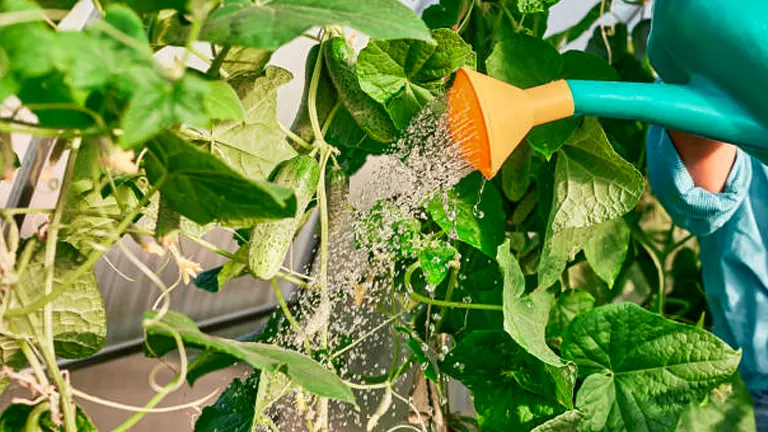
Watering practices significantly impact the effectiveness of fertilization. Cucumbers are composed of 95% water and require consistent, even moisture for optimal growth and fruit development. The goal is to maintain soil moisture without waterlogging, which can lead to nutrient leaching and root diseases.
- Consistent Moisture: Ensure the soil remains evenly moist, especially during flowering and fruit setting. Drip irrigation is ideal for delivering water directly to the root zone, reducing evaporation and preventing foliar diseases.
- Relation to Fertilization: Over-watering can dilute and wash away nutrients, making them less available to the plant. Conversely, under-watering can cause the soil to dry out, hindering nutrient uptake. Water your cucumbers before and after fertilizing to help nutrients dissolve and spread more evenly through the soil.
Optimal Planting Distances for Cucumbers
Proper spacing is crucial in cucumber cultivation to ensure healthy growth and maximum yield. Here’s how to space your plants for optimal results:
- Plant-to-Plant Distance: For bush varieties of cucumbers, space plants about 2 to 3 feet apart in the row. For vining varieties, more space is beneficial, about 3 to 6 feet apart, as they need room to spread.
- Row-to-Row Distance: Allow 4 to 6 feet between rows. This spacing helps in air circulation, reduces disease transmission, and facilitates easier harvesting.
Adjusting spacing based on variety and growth habit is key to a healthy cucumber orchard, allowing plants to receive ample sunlight and nutrients.
Seasonal Pest Management in Cucumber Cultivation
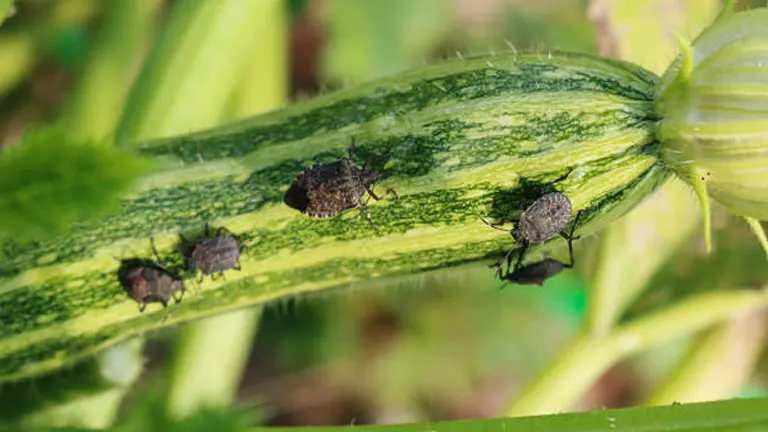
Pests can vary by season, affecting the health and productivity of your cucumber plants. Here’s a seasonal guide to common pests and their management:
- Spring: Aphids and cucumber beetles emerge with the onset of warm weather. Use floating row covers to protect young plants, and introduce beneficial insects like ladybugs to control aphid populations. Neem oil can deter cucumber beetles.
- Summer: Squash bugs and spider mites can be problematic. Regularly inspect the undersides of leaves and remove any eggs or bugs manually. Insecticidal soaps or horticultural oils can help manage spider mites.
- Fall: As the season cools, slugs and snails may become more active. Use organic slug baits or create barriers with diatomaceous earth around your plants.
Common Mistakes to Avoid
To maximize the effectiveness of your fertilization efforts and ensure the health of your cucumber plants, be mindful of these common pitfalls:
- Over-fertilization: Excessive fertilizer, especially nitrogen, can lead to lush foliage at the expense of fruit production. It can also increase the risk of pest and disease issues.
- Ignoring Soil pH: The availability of nutrients is heavily influenced by soil pH. Ignoring pH levels can lead to nutrient lock-up, where plants cannot access the nutrients present in the soil.
- Neglecting Organic Matter: Organic matter not only provides nutrients as it decomposes but also improves soil structure, water retention, and microbial life. Its absence can lead to a less vibrant soil ecosystem, affecting plant health.
Conclusion
Fertilizing cucumbers effectively is a nuanced practice that can significantly influence your garden’s productivity. By understanding the specific nutritional needs of cucumbers at various growth stages, preparing the soil properly, selecting the right fertilizer, and following a thoughtful fertilization schedule, you can support robust growth and a bountiful harvest. Remember to monitor plant growth and soil conditions, adjusting your practices as needed, and always consider the vital role of water in relation to fertilization.
FAQs
- What’s the best time to start fertilizing cucumber seedlings?
Begin fertilizing cucumber seedlings once they have two true leaves, using a half-strength, balanced liquid fertilizer to encourage strong initial growth without overwhelming them. - How frequently should cucumbers be fertilized during the growing season?
Fertilize cucumbers every 4-6 weeks with a balanced fertilizer. Shift to a potassium-rich fertilizer as the plants begin flowering and producing fruit to support this energy-intensive phase. - Can over-fertilization harm my cucumber plants?
Yes, over-fertilization can lead to lush foliage at the expense of fruit production, salt accumulation in the soil, and potential root burn, stressing the plant and reducing yield. - What signs indicate my cucumbers need more fertilizer?
Signs include slow growth, pale or yellowing leaves (indicative of nitrogen deficiency), and reduced flowering or fruiting, signaling a need for more nutrients. - How does the choice of fertilizer affect cucumber flavor and texture?
Adequate potassium is linked to improved taste and firmer fruits, while overuse of nitrogen can lead to watery, less flavorful cucumbers. - Should I use different fertilizers for bush and vining cucumber varieties?
While both types benefit from balanced fertilization, vining cucumbers, which have a longer growing period and potentially larger yield, may require additional nutrient boosts, especially in nitrogen during early growth and potassium during fruiting. - How important is soil pH for fertilizing cucumbers effectively?
Soil pH is crucial; cucumbers prefer a slightly acidic to neutral pH (6.0-7.0). If pH is outside this range, nutrient availability decreases, and fertilization won’t be as effective. - Are there eco-friendly fertilization practices for cucumbers?
Yes, using organic fertilizers like compost or well-rotted manure, practicing crop rotation to maintain soil health, and applying mulch to reduce the need for chemical fertilizers are all sustainable practices that benefit cucumbers.
Fertilizing cucumbers the right way leads to a garden full of healthy plants and plentiful cucumbers. With the right timing and balance, you’ll enjoy a bountiful harvest. Happy gardening!

Benjamin Brooks
Forestry AuthorGreetings! I'm Benjamin Brooks, and my journey over the past 15 years has revolved around the fascinating realms of content creation, expertise in snow clearing, and the intricate world of lumberjacking and landscaping. What began as a simple curiosity about the natural world and heavy machinery has evolved into a passionate profession where my love for crafting words intertwines seamlessly with my lumberjacking and garden skills.


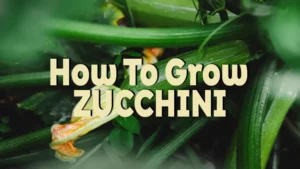





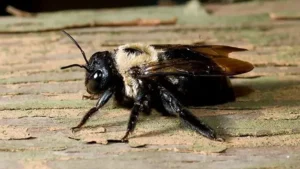
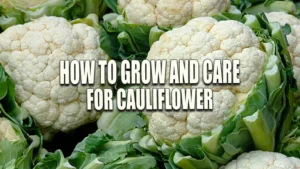



Leave your comment